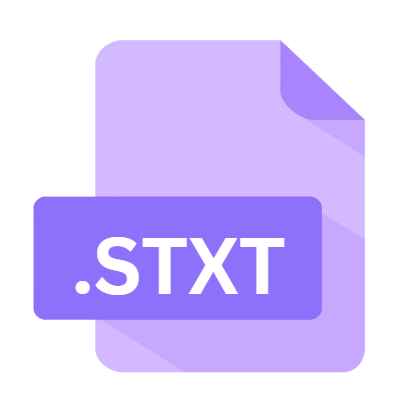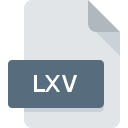.STXT File Extension

Sealed Text File
| Developer | Oracle |
| Popularity | |
| Category | Encoded Files |
| Format | .STXT |
| Cross Platform | Update Soon |
What is an STXT file?
.STXT files are a type of text file distinguished by their unique encryption and sealing mechanisms, rendering them secure and tamper-proof.
Unlike conventional text files, which are susceptible to unauthorized access and modifications, .STXT files employ robust encryption algorithms to safeguard sensitive information.
More Information.
The concept of sealing text files dates back to the early 2000s when cybersecurity concerns began to intensify.
Initially conceived as a means to protect sensitive documents and communications, .STXT files were developed to address the shortcomings of traditional text formats, such as TXT and DOC.
By integrating encryption at the file level, these sealed text files offered a higher degree of confidentiality and assurance, making them ideal for storing confidential memos, financial records, and legal documents.
Origin Of This File.
The genesis of .STXT files can be traced back to the growing need for enhanced data security in various sectors, including finance, healthcare, and government.
As digitalization accelerated and cyber threats proliferated, there arose a demand for text files that could withstand unauthorized access and maintain data integrity.
Thus, the concept of Sealed Text Files emerged, aiming to provide a solution that combines the flexibility of text-based formats with advanced encryption techniques.
File Structure Technical Specification.
.STXT files exhibit a structured format designed to encapsulate plaintext content within a secure envelope. At its core, a .STXT file comprises two main components: the encrypted payload and the metadata.
The encrypted payload contains the actual text content, encrypted using a strong cryptographic algorithm such as AES (Advanced Encryption Standard) or RSA (Rivest-Shamir-Adleman).
Meanwhile, the metadata section stores information about the encryption method, key parameters, and authentication tokens required for decryption.
Technical specifications of .STXT files may vary depending on the encryption algorithm and encoding standards employed.
They typically adhere to industry best practices for data security and interoperability, ensuring compatibility across different platforms and applications.
How to Convert the File?
Converting a ‘.STXT’ file to other formats typically involves decryption followed by extraction of the textual content.
The conversion process may vary depending on the encryption method and software used to create the file.
Some specialized software applications offer built-in conversion capabilities, allowing users to export the decrypted text into standard formats such as TXT, DOC, or PDF.
Alternatively, manual conversion can be performed by opening the ‘.STXT’ file in a compatible text editor or decryption tool, copying the content, and pasting it into a new document in the desired format.
It’s essential to ensure that the converted file retains the intended formatting and readability to preserve the integrity of the original content.
Advantages And Disadvantages.
Advantages:
- Enhanced Security: .STXT files provide robust protection against unauthorized access and tampering, mitigating the risk of data breaches and leaks.
- Data Integrity: By sealing text content with cryptographic signatures, .STXT files ensure that the information remains unchanged and authentic.
- Compliance: .STXT files facilitate compliance with regulatory requirements and industry standards governing data privacy and security.
- Versatility: Despite their encryption, .STXT files retain the inherent flexibility of text-based formats, allowing for easy editing and sharing among authorized users.
Disadvantages:
- Complexity: Decrypting .STXT files require specialized software and authentication credentials, which may pose challenges for non-technical users.
- Dependency on Encryption Keys: The security of .STXT files rely heavily on the protection of encryption keys, necessitating stringent key management practices.
- Compatibility Issues: Some legacy applications and platforms may lack support for .STXT files, limiting their interoperability in certain environments.
How to Open STXT?
Open In Windows
- Utilize compatible software: On Windows, users can open .STXT files using compatible software applications designed for handling encrypted text files. These applications may include proprietary software provided by the creators of .STXT files or third-party alternatives offering similar functionality.
- Consider file association: Associating .STXT files with a specific application ensure seamless access and convenience when opening these files. Users can right-click on an STXT file, select “Open with,” choose the preferred application, and optionally set it as the default program for opening .STXT files.
Open In Linux
- Explore command-line utilities: Linux enthusiasts can leverage command-line utilities and cryptographic libraries to decrypt and access .STXT files on various distributions. Tools such as GPG (GNU Privacy Guard) offer robust encryption and decryption capabilities, enabling users to decrypt STXT files and extract the plaintext contents with ease.
- Install compatible software: Users can explore software repositories and package managers to identify compatible applications for handling .STXT files on Linux. These applications may include proprietary solutions or open-source alternatives tailored for secure text file management.
Open In MAC
- Use compatible software: macOS users can access .STXT files using compatible software available for the platform. Similar to Windows, these applications may include proprietary solutions or third-party alternatives capable of decrypting and rendering the contents of .STXT files.
- Leverage terminal commands: For advanced users comfortable with command-line interfaces, terminal commands provide a flexible means of decrypting and accessing .STXT files. By leveraging cryptographic libraries or custom scripts, users can decrypt STXT files directly from the command line and view the plaintext output using text editors or terminal-based tools.













